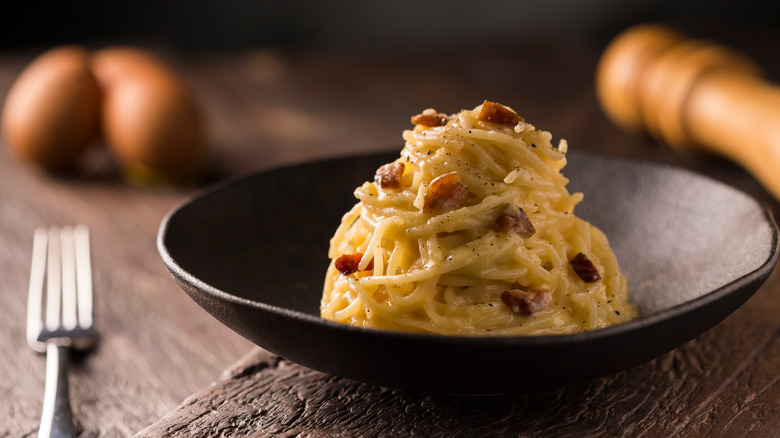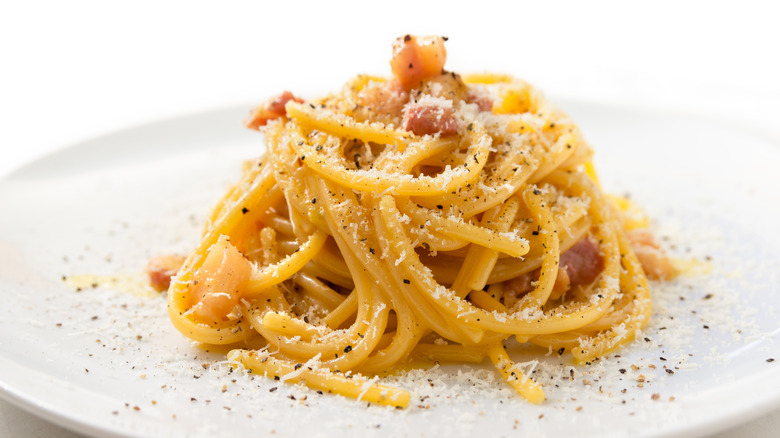Surprise, Surprise: Carbonara's Origins Might Not Belong To Italy After All
It's hard to fully consider the extent of controversy that a simple dish of spaghetti, eggs, cheese, guanciale, and black peppercorn can cause. Few foods have been the reason for as much dispute as carbonara has — a dish so grounded in traditions that it does not take well to experimentation and modern renditions. Major publications like the New York Post have been slammed for suggesting the addition of tomatoes to carbonara. Celebrity chefs have faced the wrath of Italians for adding wine and cream to the pasta, and even different regions of Italy disagree on the true elements of a carbonara.
The latest carbonara controversy, however, has nothing to do with the nuances of its ingredients. Rather, the matter boils down to its origin. In an interview with Financial Times, food history professor and author of the 2018 book "Denominazione di origine inventata (Invented Designation of Origin)," Alberto Grandi claimed that the origin stories of several famous Italian dishes are misguided and half-baked truths.
Among the dishes with muddled histories are tiramisu, panettone, pizza, and carbonara. Grandi refers to the origin of carbonara as an invented tradition and claims that like serval other Italian foods, its invention and popularity are both tied to the U.S. and not Italy. While the credit may lie with an Italian chef, the first carbonara is believed to have been cooked using American ingredients for the U.S. Army in 1944, indicating that the origin of carbonara may belong more to the U.S.
An Italian pasta made using American ingredients
Some believe that carbonara may date back to the Romans, but food historian Luca Cesari says that a lack of written record makes it hard to verify the claims, especially since the first mentions of carbonara didn't appear in newspapers until the 1950s (via The Daily Beast). To make things more confusing, it was no Italian cookbook that mentioned the first-ever written recipe for carbonara. On the contrary, it appeared in "Vittles and Vice: An Extraordinary Guide to What's Cooking on Chicago's Near North Side" which was a 1952 guide to restaurants in Chicago.
Experts also believe that while Italian chef Renato Gualandi was the first to cook carbonara. He did so for the U.S. Army stationed in Riccione with Harold Macmillan in attendance. Gualandi later said, "The Americans had fabulous bacon, very good cream, some cheese, and powdered egg yolks," indicating that the carbonara was made using American ingredients and had a slightly different ingredient list than it does today (via Financial Times).
Author Alberto Grandi goes on to claim that carbonara — along with several other Italian dishes — is a product of post-war Italy where scarce ingredients were suddenly abundant, Italian identity was in tatters, and many had immigrated to the U.S. taking with them cooked-up traditions. For that reason, Grandi has made the bold but controversial statement, "Italian cuisine really is more American than Italian."

